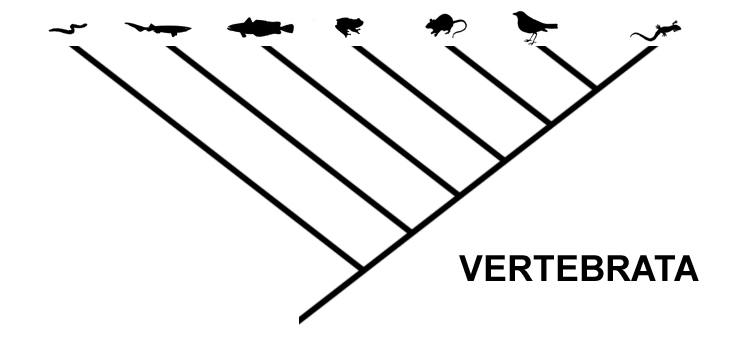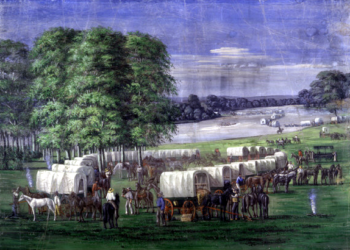
There is an effort afoot in the university press and higher education communities to transition humanities monographs to open access, which to some is a vital element of repositioning humanities fields to take a more public role. Ithaka S+R colleagues have played a role in developing cost estimates for monograph publishing, several presses have led subvention modeling, and others have reflected thoughtfully on the broader transformations in business models that a shift to open should be expected to yield. While costs and business models are essential, they are not the only puzzle pieces. Project Muse’s recent announcement about supporting open access book publishing indicates that some important infrastructure is coming online to support these directions. Costs, business models, and infrastructure are vital.
Given the diversity of university presses, it is important to recognize how different they are in terms of costs, scale, and business models. For example, annual book revenues is a statistic that can vary widely from university press to university press. The degree of subsidization they receive from parent universities is another interesting metric. Some presses have endowment funds upon which they can draw or direct subsidies from their parent universities. Others must break even without direct support, and some presses must even return a surplus to their parent universities. One could even tier presses based on their current costs of producing a monograph, where selectivity is probably one of the most significant drivers of cost.
These kinds of statistics can be interpreted in conjunction with a more qualitative understanding of the position of presses to recognize the diversity they bring in terms of organizational capacity, incentives, and objectives. A taxonomy that describes some of the key categories of presses today is presented below, intended to help us recognize the richness and complexity of this community. Some presses will fall into multiple categories, since the taxonomy is not meant to be exclusive:
Some university presses including most notably Oxford and Cambridge are profit centers to their universities, with a truly global footprint and diversified publishing that extends well beyond monographs. They are often seen as outliers to the rest of the university press community, in part because they are tasked not only with a scholarly communications mission but also with returning a surplus to their parent universities. Their academic divisions have major journal publishing programs, and their businesses extend beyond academic works to English language teaching, dictionaries, and textbooks. At the same time, the scale of these global presses does not match that of commercial publishers such as Wiley, Springer, and Elsevier, which are beginning to move beyond publishing into a variety of workflow and analytics products based on their ability to acquire and build a variety of technology-enabled products. They have strong journals lists and offer platforms on behalf of other publishers but face certain struggles, for example because they cannot achieve the scale of their commercial peers.
Others, such as Princeton and Harvard, have internal endowed funds that, along with their commercial success, allow them to invest in their businesses and stay otherwise financially independent of their parent institutions. With historically strong brands, these independent success stories typically have very strong marketing relationships and author lists and occasionally issue crossover titles that experience trade-level success. In many ways, such as sales and awards, these presses continue to experience success with the scholarly monograph as it exists today. They have limited external incentives to change.
Some university presses have major journals programs or other non-monograph activities, including California and North Carolina, but without as much business strength in their books programs. Many such presses have become experimenters, working to innovate their publishing models to make sense in an increasingly open environment. Some are operating new platforms of their own, such as California, while others are seeking alliances, for example with Project Muse. They have received substantial grant funding, largely from The Andrew W. Mellon Foundation, to cover the capital costs of their experiments, and hopefully will share the negative as as well as positive outcomes of their experiments to allow the rest of the community to learn from their work. These presses continue to publish strong lists with an associated cost structure that they must cover, but they are eager to experiment with new models that may have different affordances.
A number of presses are being merged into their academic libraries or now report to the library. In some cases, such as Michigan and Temple, this has resulted in growing incorporation into, and contribution to, the mission and work of the academic library. These integrated presses can pursue major initiatives to disrupt scholarly publishing, but they vary substantially in scale and potential for impact. In some cases, hidden presses have been merged into the library less for strategic reasons than to provide a graceful budgetary mechanism to cover, and to some degree mask, their cost to the university. There are other cases where presses report to the university library director but continue to operate more or less independently as businesses.
There are several new entrants, which style themselves disruptors to some degree, and are in some cases being started from within, or in close collaboration with, the library. This includes the Amherst College Press and the University College London Press. Starting without a legacy business to defend or an existing cost basis to support, new entrants typically lack for the capital needed to scale up. Most new entrants, in both the US and the UK, are introducing various models of open access publishing. One common direction involves using institutional subsidies to support all the works they publish, or those that are authored by university affiliates, which some have characterized as “platinum” open access since no processing fees are charged to the author.
Other presses, falling into none of the categories above, largely publish monographs–some which are editorially quite innovative–along in some cases with regional or other specialized book titles. These presses, if not a majority then the plurality of American university presses, typically rely on some form of subsidy, often direct, from the general operating budget of a parent university.
There are two types of presses here. A first group might be called the resilient middle, presses such as that of Ohio University that are managing through the challenges to the monograph market by building focused high-quality lists in specific fields and are finding steady returns in regional or other non-monographic books. They are experiencing success today, are valued by their university leadership, are successful in arguing the case for ongoing subvention, and are rightly proud of what they have been able to achieve in difficult circumstances.
There is also a group of questionable presses, for which market challenges have exerted continuing pressure on their ability to operate sustainably. These presses make meaningful contributions to academia, but they do not have enough resources or scale to make a meaningful shift in their operating position. They are hanging on stubbornly even in the face of real skepticism from parent universities about ongoing subsidization, deftly resisting closure in a number of cases by seeking shelter in the library as described above.
A taxonomy can be helpful in understanding the environment for university presses in its fullest richness, and in a way that I hope will contribute to our recognition of the diversity of organizational capacities and incentives that face their leaders.
***
A draft version of this post appeared originally on the Ithaka S+R blog. My thanks for helpful comments from and discussion with Lisa Bayer, Meredith Babb, Richard Brown, Todd Carpenter, John Dove, Joseph Esposito, Alistair Horne, David Kornacker, Derek Krissoff, Kimberly Lutz, and Elizabeth Scarpelli.
Discussion
6 Thoughts on "A Taxonomy of University Presses Today"
This blog post is a must read for this group
http://upcolorado.com/about-us/blog/item/3091-why-a-university-press-is-a-good-investment
It is useful to be reminded of the many different types of university press. It would be interesting to know why different UPs develop such different cultures and have such a variety of commercial impacts.
As Roger Schonfield says, the university presses of Oxford and Cambridge are often regarded as outliers to the rest of the UP community. Why are the two largest UPs both part of UK universities, with no UP in the USA approaching their size?
Oxford and Cambridge UPs are both profit centers for their Universities, but why are the profits of Oxford UP consistently so much greater than those of Cambridge UP, both in absolute terms and as a percentage of sales?
Just a point of information: Princeton, unlike Harvard, is separately incorporated, not a unit of the university. This sometimes has great significance: for instance, it explains why only Princeton was a plaintiff in the photocopying suit against Michigan Document Services. It could bring a suit independently of its university.


